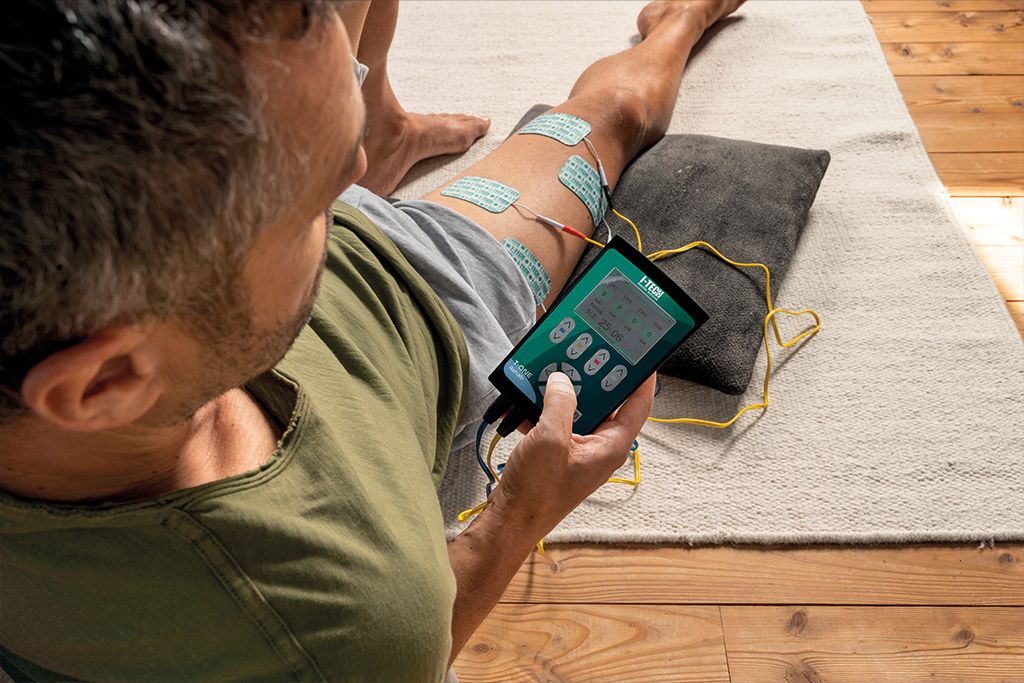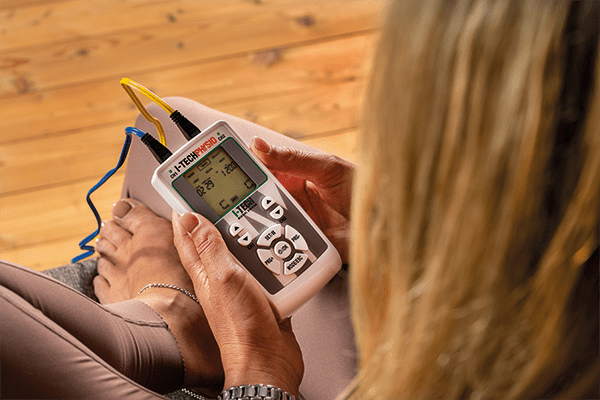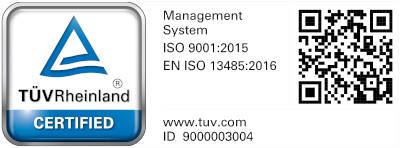Excitomotor electrostimulation is a technique that allows the activation of muscles by means of electrical stimulation induced by a generator. Through this electrical stimulation, a variety of effects can be triggered at the level of voluntary muscles, ranging from muscle strengthening and toning to massage or relaxation. These effects are achievable through programs designed to achieve specific results.
Electrotherapy: the contraindications
The use of an electrostimulator has absolute contraindications, at least without specific medical indications following individual specialist evaluations. These contraindications include:
- Pacemaker wearers
- Cardiac patients
- Epileptic patients
- Pregnant women
- People suffering from phlebitis in an active state or thrombophlebitis
- People affected by neoplasms or cancers
- Skin lesions in the treatment area
There are also situations in which use is contraindicated unless supervised by professionals:
- Presence of fixation device
- Muscle injuries
- Skin lesions in the area to be treated
- Presence of inflammatory states
- In children
Whether it is antalgic stimulation such as TENS currents or muscle stimulation, the contraindications to be adhered to are always the same- although in the case of TENS, electrical parameters with significantly lower values are used.
Finally, we recommend against the use of an electrostimulator if the cause of the pain is not known or if it has not yet been diagnosed. We recommend sessions only after consulting a physician and receiving a diagnosis of the pain. In the presence of trauma, stress or any other health problem, we remind you to use the device only after consulting your doctor and under his or her supervision.
Side effects of electrotherapy
No significant side effects are known. In some cases, of particularly sensitive people, skin redness may occur at the electrodes after treatment: the redness normally disappears a few minutes after treatment. If the redness persists, we recommend consulting a physician. In very rare cases, stimulation performed in the evening may cause, on some subjects, a delay in falling asleep. In such cases we recommend avoiding evening treatment.
Electrostimulator: pros and cons
Electrostimulation activates muscles through induced electrical stimuli and can achieve a major training effect at the level of the muscle districts to which it is applied.
In addition, through a series of specifically designed programs, it can optimize its action by aiming to increase different contractile capacities of the muscles.
The fields in which the peculiarities of this working method can be used are many. They range from the aesthetic field, in which the toning effects can be exploited at the level of the abdomen, arms, buttocks, and other districts, to the sports field for which specific increases in strength and power can be exploited, as well as the ability to promote recovery from fatigue following intense activity.
In the field of rehabilitation, functional rehabilitation and reathletization, electrostimulation also plays an important role. The ability to activate muscles allows faster and more effective recovery, such as reducing the risk of relapse.
Electrostimulation has, like other instrumental physical therapies, limitations. The main one, intrinsic to the method, lies in the fact that activation by electrostimulation does not generate a training effect at the level of the nervous system. However, with a combined training program in which voluntary physical activity is combined in addition to electrostimulation, it is possible to effectively overcome this limitation.
Another aspect to consider, from an operational point of view, is that you cannot stimulate many muscle groups at once (particularly if you aim to increase strength).

What are the benefits of electrostimulation?
The use of electrostimulation for fitness and wellness purposes helps maintain good muscle tone, promote muscle strengthening and endurance. Also worth mentioning is a general improvement in quality of life. Particularly useful benefits for people who, due to lifestyle, do not engage in movement or exercise.
Moreover, thanks to specific programs, electrostimulation promotes peripheral vascularization and accelerates recovery from fatigue. Useful aspects for both those who practice sports and those who lead more sedentary lives; especially since it is possible to enjoy these benefits in the comfort of home.
The role of electrostimulation in the prehabilitation phase, which precedes surgery, must be mentioned too. Both in this case and post-injury electrostimulation helps to improve recovery time and avoid episodes of recurrence.
When not to use the electrostimulator?
The electrostimulator can be used independently by people who are “healthy,” thus in the absence of disease, and who want to work on muscles.
In the rehabilitation field, in which it plays an important role, the electrostimulator should be used following the advice of the physician, who will provide appropriate protocols that can also be performed at home, completely independently.
In cases of trauma and injury, it is best to avoid using excitomotor electrostimulation, lest we not only fail to achieve the desired results but also incur increased pain-temporary but certainly unpleasant.
Precautions for using the electrostimulator
Good news: the precautions to be observed are not many. These mainly concern the storage of the device and electrodes, including the cables, since electrostimulation automatically controls the circuit parameters ensuring the safety of the treatment.
In fact, to optimize the effectiveness of the therapy, it is important to check before each application that the electrodes are always in good condition.
How can you tell? By the adhesive capacity of the pre-gelled part of the electrode that is put on the skin. To optimize pulse transmission, as well as to preserve the electrodes, it is advisable to cleanse the skin before starting the session.
One final caution: check that the program you choose is tailored to the body district on which you are using it, so you can be sure that the electrical parameters are the optimal ones to meet your needs.
We conclude this blog article with some of the most frequently asked questions, with the goal of giving you valuable information relative to your search for information about electrotherapy:

Is it difficult to use an electrostimulator?
Using an electrostimulator is extremely simple. Typically, the devices have a program list that easily identifies the goals and body areas on which therapy can be performed. Some examples:
– “Muscle recovery” indicated for fatigue recovery,
– “deep massage” indicated to relax muscles,
– “resistant strength” useful for increasing muscular endurance,
– “fast strength” useful for increasing muscle quickness.
Electrode placement is also not complicated, although it may seem a bit difficult at the initial stage. I-Tech Medical Division medical devices all have a dedicated manual on electrode placement-a true guide to performing the treatment effectively.
There is also a customer service team always ready to support you if you have any questions or requests for information.
How many sessions of electrostimulation can be done?
The duration of an electrostimulation cycle is related to the goals you want to achieve.
If you are using the electrostimulator as a training support, you may consider doing cycles of 10 sessions, 2 or 3 times a week alternating with a break period of 1 or 2 weeks.
In case you want to use it for fatigue recovery or to take advantage of the benefits of massage or cool-down, you can also use it daily.
As we mentioned earlier, electrostimulation also plays an important role in terms of rehabilitation. Let’s look at an example of post cruciate ligament surgery.
It is possible to do therapy from the second week after surgery, under professional supervision, until full recovery (thus up to the tenth month post-surgery). It is possible to continue with therapy even after recovery, but in this case, the sessions become a support to performance or fitness training.
Does the electrostimulator hurt?
The electrostimulation session does not hurt, particularly when this technique is used for antalgic purposes (TENS) or with the goal of cool-down or obtaining massage on the affected area.
Slight discomfort may be felt when using this technique for training. The contraction induced by the device is “abnormal” compared with voluntary contraction, and this may cause a feeling of discomfort especially when using high intensity levels. We therefore recommend increasing gradually the intensity of stimulation to maintain a pleasant sensation. The sensation of discomfort can be reduced by performing the electrotherapy treatment in active mode, that is, by actively contracting the muscle during the delivery of the electrical stimulus.
If you would like to receive more information regarding electrotherapy, please feel free to contact us. Below we also share with you our blog article on “how to choose a good electrostimulator.” Happy reading!






